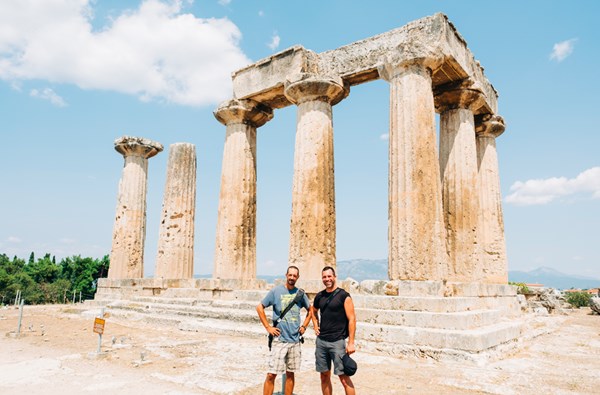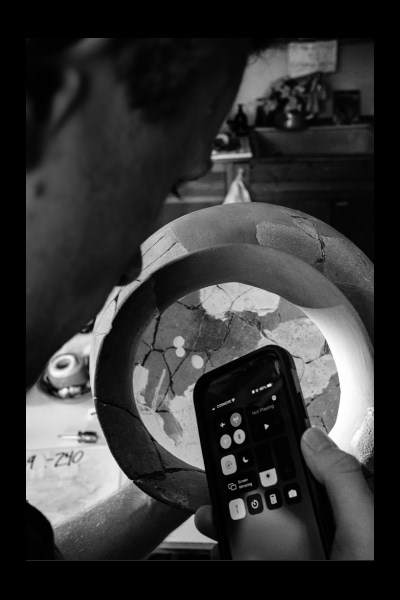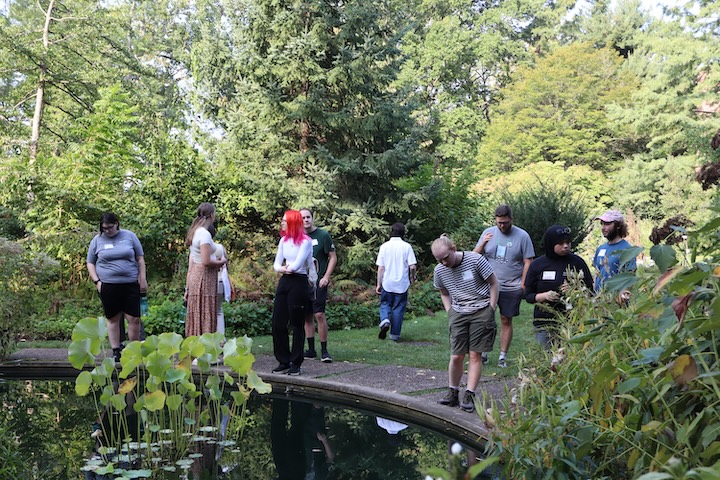Exhibit explored the art of archaeology
An exhibit at the MSU Union Art Gallery captured the excitement and visual appeal of archaeological research while exploring “The Art of Archaeology.” The 27 black-and-white images that make up the exhibit were all taken at the MSU Excavations at Isthmia in Greece by Daniel Trego, educational media design specialist in EEB and MSU’s College of Arts and Letters.

Since fall 2020, Jon Frey, associate professor in the Department of Art, Art History and Design, has directed the MSU Excavations at Isthmia. Under his guidance, the project has renewed decades-old discoveries and made them accessible to the public through extensive auditing and digitization. Throughout this digital dig, another angle of archaeology has come to light — the unique relationship between archaeology as science and archaeology as art. “The Art of Archaeology” exhibit at the MSU Union Art Gallery ended Feb. 18.
The creation of the exhibit was spontaneous. After the directorship of the Ohio State
University Excavations at Isthmia was transferred to Michigan State University in
fall 2020, Frey took stock of how the program’s education abroad component could be
reimagined in the context of the pandemic. And, during summer 2021, the College of
Arts and Letters and the Office of Education Abroad supported a pilot program to create
a virtual education abroad program based on work at the Isthmia excavations.
Trego, who led the documentation of the pilot program, traveled to Greece to capture
images, video

and audio recordings of two students in the Isthmia education abroad program to create a digital education abroad. The “Art as Archaeology” exhibit consists of those moments Trego captured outside the education abroad footage.
“Daniel Trego deserves all the credit for pitching me this idea and for directing nearly all of the documentation this summer,” Frey said. “This exhibit stems from the work he was doing on the side in-between moments when we were shooting video. When we got back to Michigan and he began to show me his images, I was just blown away. I had assumed he was always shooting for the study abroad, but it turns out he was also capturing this amazing behind-the-scenes look at the work of archaeologists, which I found to be so visually appealing.”
When Trego began taking photos in Greece, he said he wasn’t thinking in terms of producing
an exhibit. Instead, he wanted to capture images that could be used on the Michigan State University Excavations at Isthmia website, for future class content and for education abroad.
“Since it was my first time in Greece and my first official endeavor into the subject
of archaeology, I couldn’t help but process everything through the camera lens as
I tried to learn all I could about the people, places and work at Isthmia,” Trego
said. “For me, photography is about intentionally connecting and interacting with
the world, and it wasn’t until after I shared the images with Jon that I realized
that some of these specific images might help others connect the same way they helped
me.”
After reviewing the photographs, Frey contacted Jacquelynn Sullivan Gould, Director
of Galleries in MSU’s Department of Art, Art History and Design, and learned there
was an opening in the Union Gallery. After a month of deliberation over which images
to showcase, the chosen photographs were printed and mounted, and the exhibit came
together.
“There were all these moments Daniel captured that really spoke to me,” Frey said.
“We have this idea of archaeology being so full of activity — picks and shovels and
dirt flying — but more often than not, it’s a series of quiet interactions with these
ancient artifacts and monuments… I know that exhibitions usually are planned over
months and years, but this show came together in a matter of weeks — it just felt
like it was supposed to happen.”
As Trego and Frey analyzed the photographs, they recognized that, although archaeology
is typically considered objective and scientific, the way audiences interpret artifacts
depends heavily on the creative work of photographers who capture these objects.
“Daniel and I both agreed that this space between art and science was worth exploring
in a show,” Frey said. “We’re trying to be objective and scientific in our study,
but the objects we study in classical archaeology have been given the status of works
of art. So, there’s already this push and pull between being level-minded objective
observers of the past and getting caught up in the visual appeal of these objects
that we’ve been conditioned to think are beautiful in their own right.”
Read the full story in MSU Today



